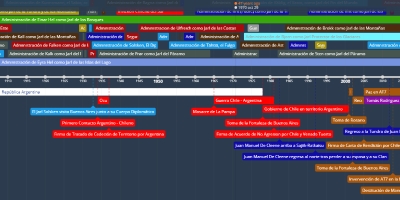The Early Age of the First Men (1 Jan 10500 Jahr v. Chr. – 1 Jan 600 Jahr v. Chr.)
Beschreibung:
The first of Eterisk’s children to awaken in mass did so upon the shores of a large bay which in time would come to be known as the Desert’s Maw. In that age, gentle rolling grasslands surrounded the freshwater estuary, stretching from north to south with hardly any variation until they reached what would later become the Bloodwild, the eastern Range of the High Snows in the south or the Vesper Mountains in Ár’s northermost reach (Where Alyka’s Palace of the North Gale yet stands).As thousands of men awoke after Myvala’s death, one of the first vices they indulged in was that of violence. Though water was plentiful, food to eat was not. Plants were sparse in the great plains and game either too quick or too dangerous to hunt (This became a problem once these first men learned of ways other than that of scavenging to get their food). Soon some came to covet what others could glean from their austere land, and so the struggles began. In their earliest of mankind’s days these fights were fought individually as the sheer need for survival drove men apart upon their waking (As hunters avoiding fellow hunters), but eventually some humans realized that there was strength in numbers and formed small packs, starting right then some of the long-standing feuds which characterized the First Men before they became the Arsala Dul.
In time, some of these packs would grow into sizable groups, and the companionship these offered as well as the increased chance of survival helped to keep alive most of the infants that were born of unions between pack-members. The presence of young humans incapable of proper fighting would bring some of the packs to seek other ways other than that of violence, arriving eventually at the decision to abandon their waking lands for better pastures well away from other packs and their hunters.
Thus was born the nomadic nature of the Arsala Dul, centered on scouring the plains of Ár in search of food, water and safety.
With the passing of the centuries these early packs became tribes and trade eventually came to be between some of the more peaceful ones. The need to communicate brought the advent of a language (Which bore no name until the Arsala Dul named it Gehl Dizan), and such brought the tribes to adopt a name to distinguish themselves from all others.
The sharing of knowledge and goods led to the development of more advanced technologies such as weaves and stone tools, and the taming of the land’s animals came shortly after; horses in the north and camels in the near-south, as well as many others such as dogs and cats.
In the centuries prior to the Long Night some tribes had even begun to settle prairies and other fertile land to engage in primitive farming, but these were few and far between. Most of the First Men carried on their nomadic legacy, scavenging, trading and fighting with each other endlessly.
The south-spanning Vourenkinn people little cared for the primitive men, whom they saw as a lesser version of themselves when long ago they had struggled under Svarfina’s tyranny. Though they occasionally traded with the nomadic peddlers that came much farther south than anyone else, the species barrier as well as the lack of a common language served to keep each people well away from each other.
Zugefügt zum Band der Zeit:
Datum:
1 Jan 10500 Jahr v. Chr.
1 Jan 600 Jahr v. Chr.
~ 9906 years
